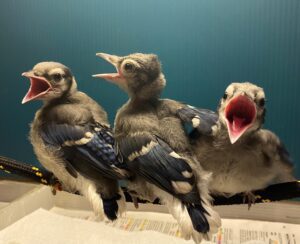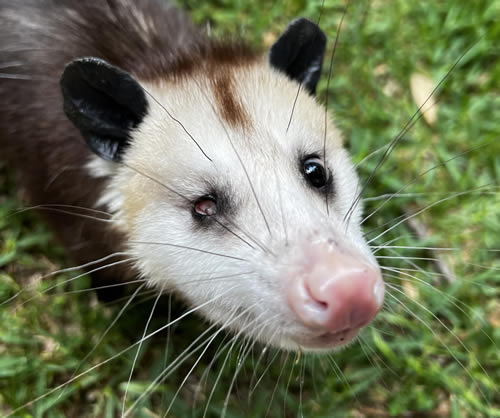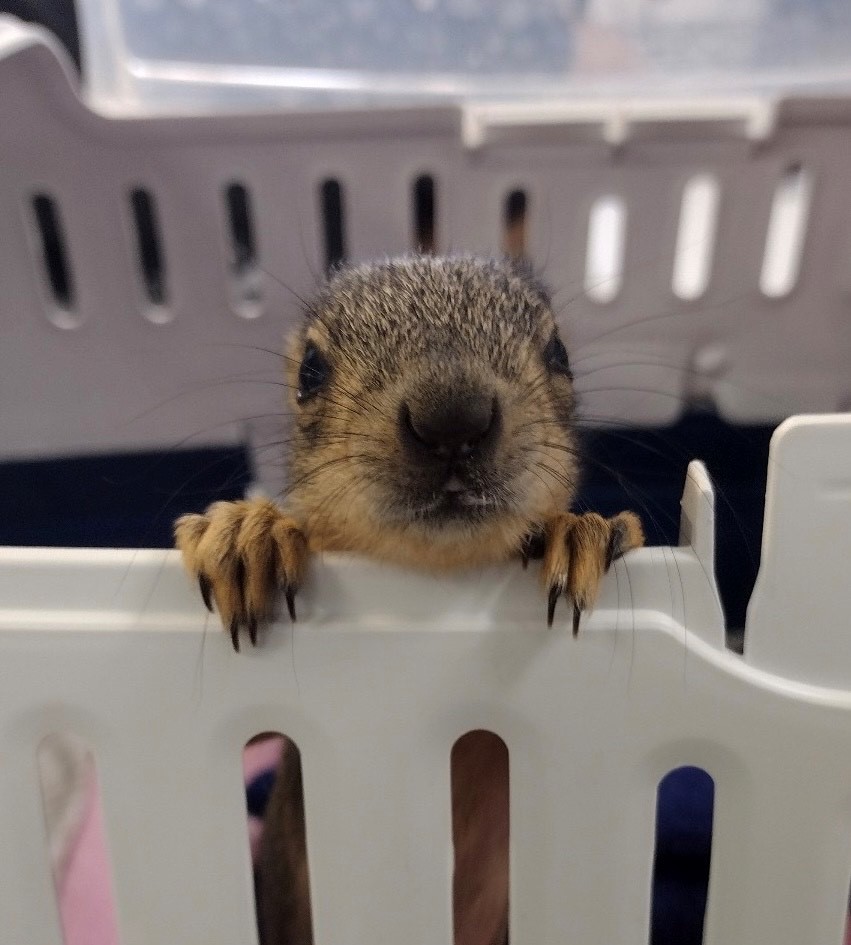By Deb Near, Animal Care Program Supervisor
Baby bird season is in full swing right now here at TWRC Wildlife Center… and we’ve got lots of awesome avian suitemates!
Around 600 species of birds can be found in Texas and over 100 species in just the Houston area alone. Perching songbirds such as blue jays, mockingbirds, grackles, and robins (known as passerines, or volunteers of the Passeriformes order) make up the majority of our avian patients. We also receive birds such as doves (Columbidae), woodpeckers (Picidae), and sometimes baby raptors - birds of prey such as eastern screech owls or red-shouldered hawks - although the raptors are immediately placed with an at-home rehabber since they require a less stressful environment and specialized care.
Since songbirds are our most numerous residents, this article will spotlight three very different species: blue jays, mockingbirds, and barn swallows. There are some things that are necessary for all of them, like proper caging and perching to minimize damage to feathers and legs, a calcium supplement for their diet, and live insect enrichment to teach them how to properly hunt. But, there are distinct differences as well, which is important to keep in mind when involved with their care.
Blue jays (Cyanocitta cristata) are one of our most common residents. They form closely-knit social bonds and frequently mate for life. These birds are volunteers of the corvid family (Corvidae), which includes crows and ravens, and are known for their intelligence and problem-solving skills. The downside to that? They get bored easily. Daily care for these birds involves far more than feeding, cleaning, and attending to their medical needs. They require a wide variety of enrichment items to keep them occupied throughout their stay here. Anything that promotes their hunter/gatherer skills or draws their eye is a good choice: trays filled with topsoil that contain hidden mealworms, colorful wooden mobiles, cracked acorns, or whole peanuts scattered on the bottom of their cage. Enrichment items are essential for all birds but are especially important for corvids to ensure they remain properly stimulated.
Seeds comprise a large portion of the blue jays' diet, so they are a common sight at bird feeders. Since they are mostly a year-round resident (although some do migrate short distances), this is especially true during the leaner winter months. They also feast on a variety of insects and plant items, such as fruit and berries.
The northern mockingbird (Mimus polyglottos) is special to us here in Houston, because it is the state bird of Texas! It is also a species that frequents our animal care program every season. Even so, mockingbirds and blue jays must be caged out of sight of one another, because blue jays can be aggressive and cause other species to become stressed. In contrast to blue jays, a mockingbird's diet does not include seeds, so they won’t be a regular visitor to your bird feeder. Instead, they consume insects, fruits, and berries. They also love suet (animal fat mixed with other ingredients such as cornmeal), and nuts such as unshelled peanuts and pecans. Like blue jays, they are mostly year-round residents in the Houston metro area.
Mockingbirds are generally a solitary species and are known for being quite territorial; they can easily injure their feathers and wings while interacting. They also have a tendency to develop MBD (metabolic bone disease), which also makes them more prone to injuries. This is a great example of why proper caging and supplementary calcium are very important, not only for mockingbirds but for all of the birds in our care.
Barn swallows (Hirundo rustica) are a different type of songbird altogether. They are insectivores, meaning they subsist solely on insects and other types of invertebrates, although they have been known to sample an occasional berry here and there. Being aerial feeders, they catch flying insects as they move through the air. You generally won't find them on the ground looking for food, although that's something they may do on occasion when the weather is cooler and there are fewer actively flying insects available. Since seeds are not part of a barn swallow’s diet, you won’t find them at your bird feeder; however, they have been known to pick up discarded eggshells or oyster shells, which can help them digest their insects, as well as give them an important source of calcium.
Barn swallows are a migratory species, breeding throughout most of North America during the warmer months and heading south to Central and South America for the winter. They are the most common type of swallow; not only are they found in the Americas, but in Europe, Asia, and even Africa.
Just these three highlighted species are different enough from each other to require different diets, caging, and other considerations. Just imagine what knowledge and expertise it takes to manage a room with many more species on hand! This is why it's so important to bring any compromised bird to a facility with properly trained staff. It is essential that orphaned babies receive the proper diet and care specific to their species. That is why TWRC Wildlife Center exists. Our mission is to promote environmental conservation through public education and rehabilitation of Texas wildlife. If you find a baby bird, you can visit our Found an Animal Page to find out how you can help.
Let us help you help wildlife!


